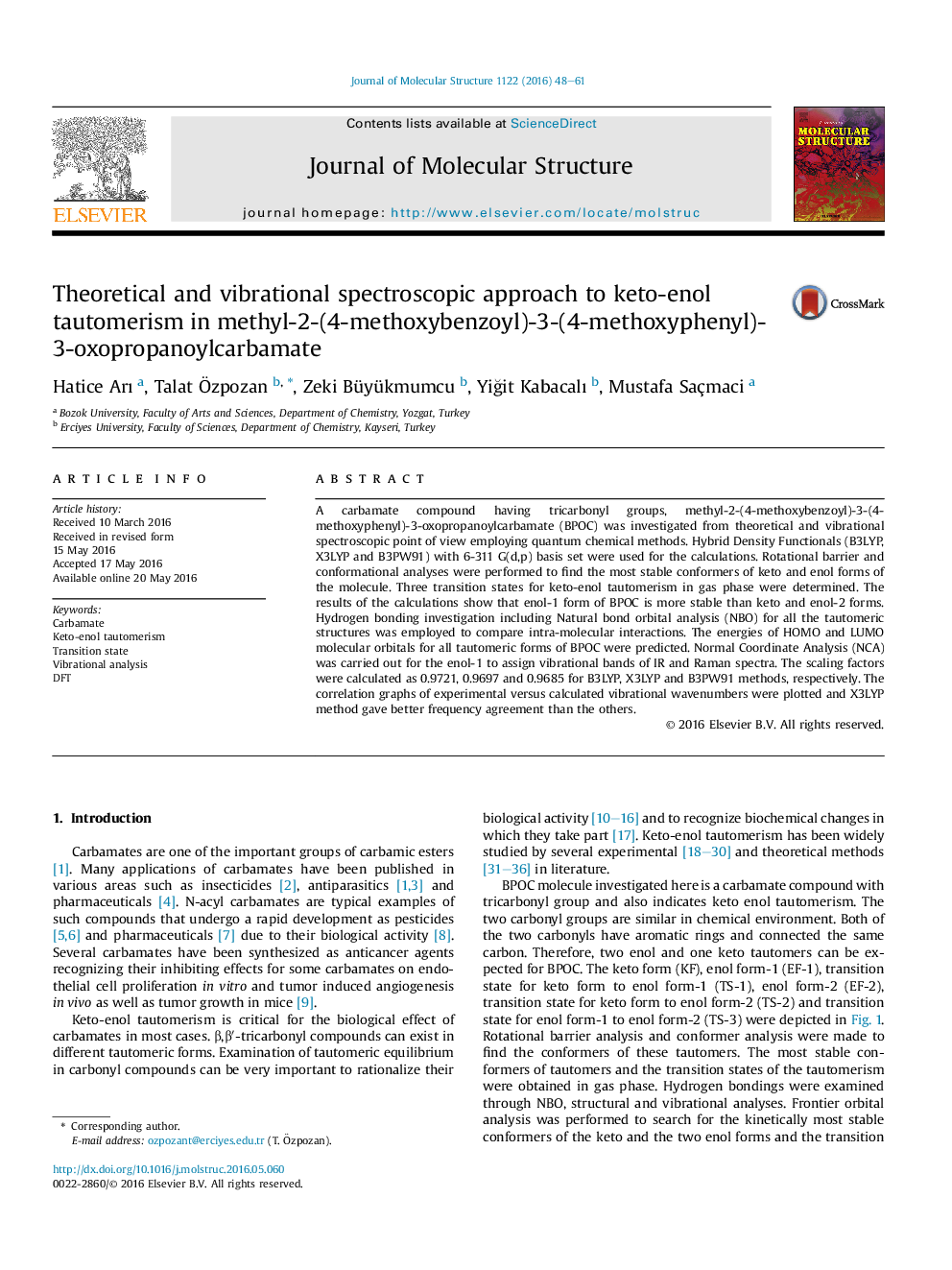| Article ID | Journal | Published Year | Pages | File Type |
|---|---|---|---|---|
| 1407668 | Journal of Molecular Structure | 2016 | 14 Pages |
•IR and Raman spectra of a carbamate derivative have been presented.•The rotational barriers have been determined for keto and enol tautomers.•The stable structures and transition states of keto-enol forms have been obtained.•Intramolecular interactions mainly hydrogen bondings have been investigated.•The vibrational analysis of enol-1 was made by three DFT methods.
A carbamate compound having tricarbonyl groups, methyl-2-(4-methoxybenzoyl)-3-(4-methoxyphenyl)-3-oxopropanoylcarbamate (BPOC) was investigated from theoretical and vibrational spectroscopic point of view employing quantum chemical methods. Hybrid Density Functionals (B3LYP, X3LYP and B3PW91) with 6-311 G(d,p) basis set were used for the calculations. Rotational barrier and conformational analyses were performed to find the most stable conformers of keto and enol forms of the molecule. Three transition states for keto-enol tautomerism in gas phase were determined. The results of the calculations show that enol-1 form of BPOC is more stable than keto and enol-2 forms. Hydrogen bonding investigation including Natural bond orbital analysis (NBO) for all the tautomeric structures was employed to compare intra-molecular interactions. The energies of HOMO and LUMO molecular orbitals for all tautomeric forms of BPOC were predicted. Normal Coordinate Analysis (NCA) was carried out for the enol-1 to assign vibrational bands of IR and Raman spectra. The scaling factors were calculated as 0.9721, 0.9697 and 0.9685 for B3LYP, X3LYP and B3PW91 methods, respectively. The correlation graphs of experimental versus calculated vibrational wavenumbers were plotted and X3LYP method gave better frequency agreement than the others.
Graphical abstractFigure optionsDownload full-size imageDownload as PowerPoint slide
